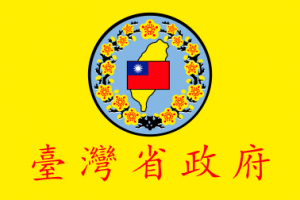Language/Min-nan-chinese/Grammar/How-to-Use-Be
Hi Min Nan Chinese learners! 😊
In this lesson, we will focus on the grammar of "be" in Min Nan Chinese. We will explain how it is used in different contexts and give you some examples to help you better understand its usage. By the end of this lesson, you will have a better grasp of the grammar surrounding "be" in Min Nan Chinese. Let's get started!
Consider broadening your understanding by checking out these related lessons: Adjectives & Gender.
"Be" in Min Nan Chinese[edit | edit source]
The verb "be" in Min Nan Chinese is usually translated as "是" (sī). It is used to equate or link two nouns, or to simply indicate existence. It is also used to indicate qualities, feelings, and states of being. In general, "是" can be used as follows:
Equate two Nouns[edit | edit source]
| Min Nan Chinese | Pronunciation | English |
|---|---|---|
| 他是老师。 | Tā sī lâu-suē. | He is a teacher. |
| 我的狗是一只贵宾犬。 | Góa ê káu sī tsi̍t tsú-kiaⁿ khon. | My dog is a French Poodle. |
| 这个桌子是新的。 | Chit-ê tsiah-tshu sī sin--ê. | This table is new. |
Existence[edit | edit source]
| Min Nan Chinese | Pronunciation | English |
|---|---|---|
| 那儿是厕所。 | Lāi--ê sī chi̍t-á. | Over there is a toilet. |
| 我是法国人。 | Góa sī hoat-kok-lâng. | I am French. |
Qualities and States of Being[edit | edit source]
| Min Nan Chinese | Pronunciation | English |
|---|---|---|
| 宝宝是睡觉睡得香。 | Pó-pó sī tsuì-kiò tsuì ê chiúⁿ. | The baby is sleeping soundly. |
| 这支笔是好用的。 | Chit-tsí phi̍t sī hó-giōng--ê. | This pen is easy to use. |
It is important to note that when using Min Nan Chinese, you do not need to use "是" in every sentence. You can simply rely on context. For example, if you want to say "I am a teacher," you can simply say "我是老师" (góa sī lâu-suē) or "我老师" (góa lâu-suē) instead.
Negative Sentences with "Be"[edit | edit source]
To make a negative sentence with "be" in Min Nan Chinese, you simply add "毋" (m̄) before "是." For example:
- 他不是老师。 (Tā m̄ sī lâu-suē.) - He is not a teacher.
- 没有人是完美的。 (Bô-ū jîn sī oan-bí--ê.) - No one is perfect.
It is important to note that when using negative sentences with "be" in Min Nan Chinese, you do not need to use "毋是" in every sentence. You can simply rely on context. For example, if you want to say "He is not happy," you can simply say "他唪人意" (tā hông jîn-i) or "他无影" (tā bô-iánn) instead.
Questions with "Be"[edit | edit source]
To make a question with "be" in Min Nan Chinese, you simply add "是" (sī) to the end of the sentence. For example:
- 这个人是你的朋友吗? (Chit-ê lâng sī lí ê pêng-iú mā?) - Is this person your friend?
- 你是不是广东人? (Lí sī bō-sī Kuáng-tang-lâng?) - Are you from Guangdong?
There are two types of questions with "be" in Min Nan Chinese: "yes or no" questions and questions that ask for more information. "Yes or no" questions usually end with "吗" (mā?), while questions that ask for more information end with "不" (bō) or "嘛" (mā). For example:
- 你是不是在说英语? (Lí sī bō-sī tsóe īng-gí?) - Are you speaking English or not? (asking for more information)
- 这个钟是你的嘛? (Chit-ê khîng sī lí--ê mā?) - Is this your clock or not? (asking for more information)
Dialogue[edit | edit source]
Let's see how "be" is used in a dialogue.
- Person 1: 刚才下雨了,地面很湿。 (Kang-tsâi hái chhiau--liāu, tē-bīn hó sūnn.)
(It rained earlier and the ground is very wet.) - Person 2: 真的吗?地上看起来很干。 (Tsin-ê mā? Tē-siōng khuànn-khì-lâi hó kán.)
(Really? The ground looks dry.) - Person 1: 没错,但地面确实很湿。 (Bô-chhut, tán tē-bīn khòe-si̍t hó sūnn.)
(No, it's not. But the ground is definitely wet.)
In this dialogue, "是" is not used, but the context of the conversation is clear.
Conclusion[edit | edit source]
In conclusion, the verb "be" in Min Nan Chinese is translated as "是", and it is used to equate two nouns or indicate existence, qualities, feelings, and states of being. It is also used in negative sentences and questions. To improve your Min Nan Chinese Grammar, you can also use the Polyglot Club website. Find native speakers and ask them any questions! 😊
➡ If you have any questions, please ask them in the comments section below.
➡ Feel free to edit this wiki page if you think it can be improved. 😎
Finished this lesson? Check out these related lessons: Plurals & Give your Opinion.

